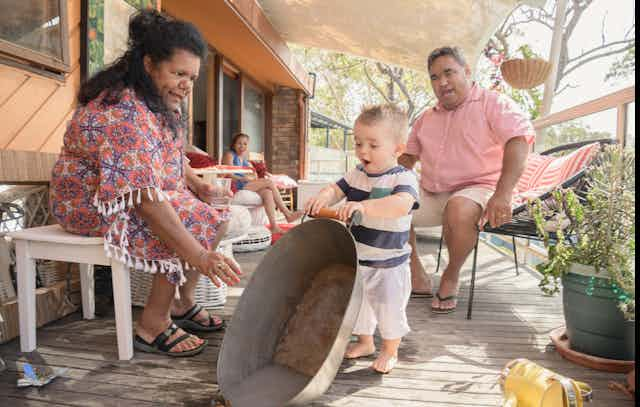The census counted 812,728 Aboriginal and Torres Strait Islander people on census night, making up 3.2% of the total people counted. That’s up from 649,171 in the 2016 census, an increase of over 25%.
Many have estimated the population prior to the arrival of the British was between 750,000 and 1 million. So the exciting news is in only 234 years we are nearing pre-colonial numbers.
Whenever there is an increase in the numbers of Aboriginal and Torres Strait Islanders, there is always speculation as to why.
Of course the politics of identity is always at play. There will be the usual commentary that targets the way people look in those old arguments that refer to skin colour as the measure of who counts as Aboriginal and the idea that lighter skin signifies less Indigenous or no Indigenous identity at all.
These worn out tropes never take into consideration that colonial policies and practices such as those that led to the Stolen Generations directly targeted people with mixed heritage. These targeted people suffered unimaginable violence in the nation’s mission to breed the colour out of us.
But unfortunately, given the lack of information in the census about Aboriginal and Torres Strait Islander peoples’ lives, we can’t be sure if overall health among Indigenous people is improving and why lifespans seem to be improving. And the census has failed to investigate other ways Indigenous people may choose to identify, and how we live as families.
Limitations in the census findings
The 2021 census, like previous years, leaves me wanting more information and a more complex read of our lives. As my colleague Wiradjuri Indigenous Studies professor Sandy O’Sullivan has pointed out repeatedly, the census survey is often a reductive examination of our lives and lacks a more detailed exploration of who we are.
There is generally no focus on race, gender and sexuality as it pertains to Aboriginal and Torres Strait Islander peoples. Nor are there any questions in the survey around what constitutes a family or a household or parenting from our perspectives.
In terms of families, the census shows there are many changes to the 6 million families counted. The census speaks of parents as being either female or male. What of same sex, queer and trans parents? Such a focus can have significant impact on families seeking services.
The census also records a reduction of people over the age of 55 years looking after “other people’s children”. However Aboriginal and Torres Strait Islander non-parental caregivers such as grandparents would likely see children they care for as being “theirs”, as this is the way Indigenous family systems work. There are thought to be a significant number of Indigenous kids living in informal kinship care. Therefore these numbers will not be accurate for Indigenous people.
The census provides details such as there are now more than 47,000 Aboriginal and Torres Strait Islander people who identify as being over the age of 65 years old. This up from 31,000 in 2016. That is great news, but without knowing any more about those who are living longer, we don’t know the circumstances that have led to this improvement.
The census tells us how many Aboriginal and Torres Strait Islander people own a house or are paying rent, but it does not speak to the rising number of Indigenous people who are homeless or unable to afford rising rent prices.
Dr David Gruen, an Australian statistician has said,
The Census collects vitally important information about Aboriginal and Torres Strait Islander communities that will help governments and local organisations plan for health, education and community services into the future
But do the questions asked in the census survey reflect our population and what is important to many of us? And if not then what does that mean for service provision for our communities?
If the census is the means by which Australia understands its population then it is fair to say it falls short on several fronts, especially with regard to Aboriginal and Torres Strait Islander peoples.
It’s time we demanded a more nuanced picture of ourselves. If the results of the census are to inform planning for health, education and community services as Dr Gruen suggests, then we need to do a better job of collecting data that reflects our population and the reality of the lives we lead.

